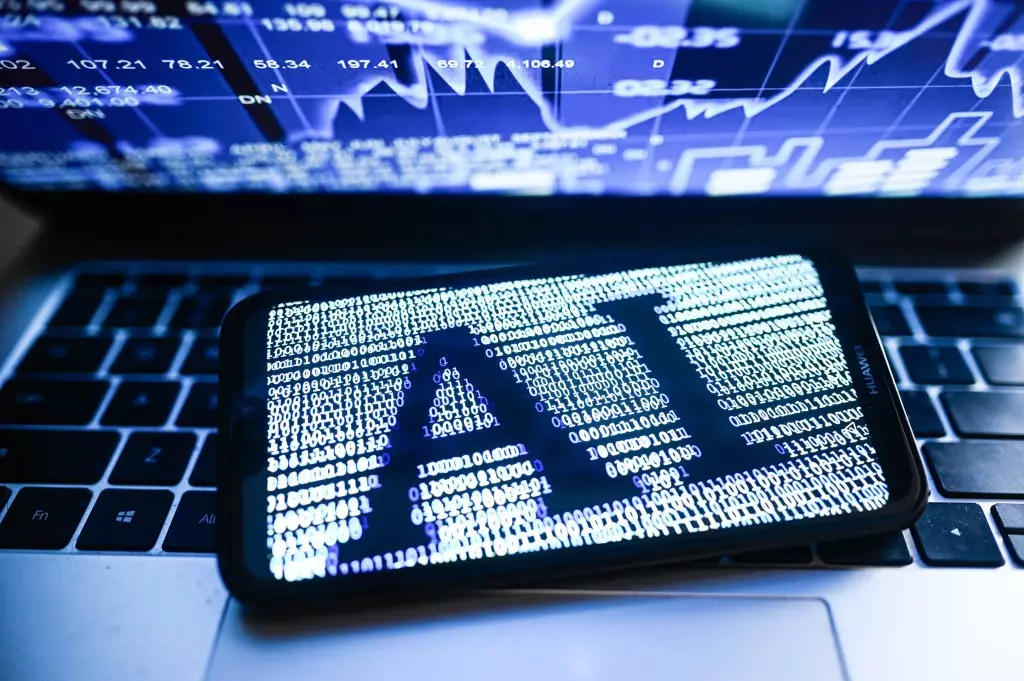As we leap further into an era increasingly dominated by artificial intelligence (AI), the dialogue surrounding copyright laws and creative expression has become both urgent and contentious. The Motion Picture Association (MPA) recently articulated a stance that embodies a cautious optimism about AI’s capacity to enhance human creativity while vehemently advocating for the preservation of copyright laws. Their ten-page dossier submitted to the White House Office of Science and Technology calls for a balance between innovation and protection, showcasing a political maneuvering that deftly straddles the aspirations of tech giants and the creative community. However, this balancing act raises essential questions: Are we genuinely safeguarding creative endeavors, or are we unwittingly inviting a technological onslaught that threatens the very fabric of originality?
The Call for Coexistence: Progress or Compromise?
The MPA’s declaration, framed around the intersection of AI and copyright, posits that these two forces can coexist in a mutually beneficial ecosystem. The caveat lies in their assertion that copyright remains paramount for encouraging originality. While this perspective is commendable, it raises alarms about the true inclusivity of such a coexistence. As entities like OpenAI and Google press for looser regulations to dominate the AI landscape, the specter of exploitation looms large. When companies openly weigh the ramifications of these policies against issues of national security in the AI race, it becomes paramount to interrogate whether the argument is genuinely about innovation-saving creativity, or rather a corporate maneuver aiming to erode the protections afforded by copyright laws.
Crucially, the argument rests on the premise that copyright incentivizes high-quality, original content which, in turn, feeds AI models. This creates a synergy that seems reasonable on paper, but is fraught with unexplored implications. If AI firms are permitted to harvest creative content without appropriate compensation to its creators, the industry risks devolving into a landscape where originality is undermined in favor of technological efficiency.
The Industry’s Response: A Division Among Stakeholders
Hollywood is in disarray, and the discord among various stakeholders raises critical issues about solidarity among creative professionals. While initiatives like the MPA’s comments aim to foster a coordinated response to the challenges posed by AI, the glaring absence of decisive action has spurred outrage. Many high-profile artists and creators have flocked to legal action in an attempt to reclaim agency over their intellectual property. The discontent is palpable, highlighting an unsettling reality: that the industry’s giants, represented by the MPA, may not fully comprehend—or may choose to sidestep—the urgency of the creative community’s plight.
When prominent voices from Sarah Silverman to entities like the New York Times claim copyright violations by AI firms, they spotlight a critical disconnect. The MPA’s restrained commentary contrasts starkly with the actively mobilized resistance emerging from the entertainment guilds. This juxtaposition not only reveals potential fractures within the industry but accentuates the necessity for a unified approach in the face of encroaching technological forces.
The Discrepancy in Value: Corporations vs. Creatives
The financial stakes are immense. The MPA notes robust economic contributions from copyright industries to the U.S. GDP, further emphasizing that copyright protections are not merely legalisms but have real-world implications. However, as the conversation pivots toward AI’s role in these industries, the rhetoric of economic benefit often ignores that the creative labor underpinning these figures is at grave risk. The veiled threat of national security, suggesting that restricting AI’s free use of content would stymie U.S. competitiveness, could easily morph into a smokescreen for corporations seeking unfettered access to a reservoir of copyrighted works.
The MPA’s position endorses the idea that IP (intellectual property) and innovation can coalesce, yet fails to confront the darker side of this narrative—one where vast corporations seek to gain at the expense of individual creators. The posturing of tech giants, advocating for regulatory leniency as a play for economic dominance, neglects the broader ethical responsibility to foster a creative environment where rights are respected and artists can thrive.
Navigating the Future: Finding the Right Balance
The discourse surrounding AI and copyright encapsulates a broader existential crisis in the arts. As innovative technologies reshape the landscape of creative expression, it is incumbent upon society to foster frameworks that not only encourage progress but also safeguard the rights of those who generate original works. The stakes are immense, and the call for a nuanced approach cannot be overstated. Creative professionals must demand clarity and advocate for policies that protect their work from being co-opted before they lose the very essence of their art.
As we stand at the precipice of a technological renaissance, the decision regarding how we allow AI to coexist with creative industries is not just a legal matter; it is a reflection of our values as a society. The significance of nurturing originality while embracing technological advancement must be the cornerstone of future policies that define this new era.


Leave a Reply